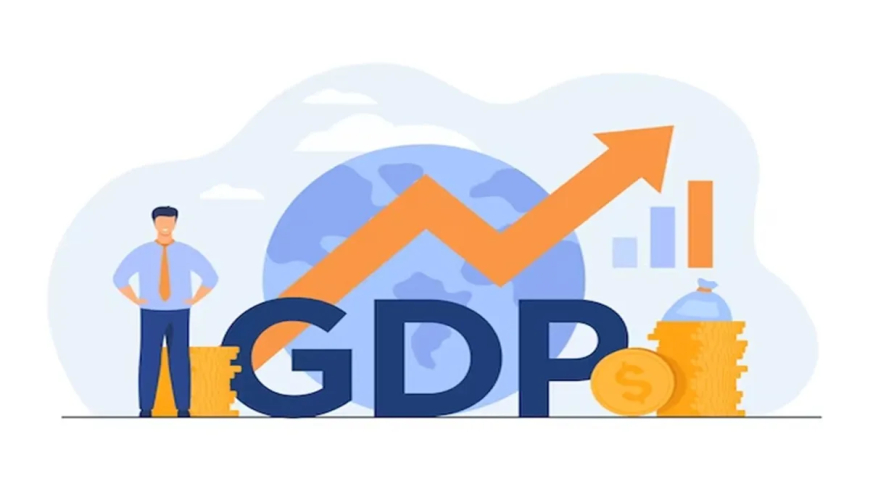Robust Recovery: How Private Consumption is Fueling India's 6.6% GDP Growth in 2025
UN projects India’s GDP to grow 6.6% in 2025, driven by strong private consumption and investment. This detailed analysis explores the growth drivers, risks, and future outlook.

India’s economy is moving ahead with resilience and speed. According to the United Nations’ World Economic Situation and Prospects, India’s GDP is projected to grow by 6.6% in 2025, outpacing regional peers and significantly exceeding global forecasts indianewsnetwork.com+8The United Nations in India+8dst.news+8. This surge is primarily driven by vigorous private consumption, backed by expanding incomes and structural reforms, as well as increased public and private investment in infrastructure. The result: a potent economic tonic in an otherwise subdued global outlook, where aggregate world growth hovers around **2.8% **.
Let’s unravel what’s behind this impressive economic performance—and why it matters.
1. A Consumption-Led Rebound
At the heart of India’s growth engine is household spending, which before the pandemic made up roughly 60% of GDP, and is now estimated at nearly **65% of nominal GDP by late 2024 **. This uptick reflects stronger adoption of financial services, rising earnings in rural and urban belts, and improved access to credit—all contributing to an uptick in consumer demand.
Retail sales of appliances, two- and four-wheeler registrations, and discretionary spending on travel and entertainment are all showing sustained growth. Moreover, the rural economy is witnessing a quiet boomerang effect, supported by healthy monsoon seasons, steady crop prices, and government schemes aimed at sustainable livelihoods .
This rebound has lifted several key sectors, including consumer goods, automotives, and services—particularly hospitality and healthcare—highlighting the deepening of India's internal demand base.
2. The Role of Investment and Infrastructure Build-Out
Private consumption might be the leading actor, but it’s not working in isolation—renewed investment in infrastructure and productive capacity is strengthening the foundations of growth.
The UN report cites “strong investment growth expected to continue” into 2025, particularly in construction and public infrastructure Business Standard. This is being reflected in real-world public spending: new highways, airports, and energy projects are in active development, many under public-private modalities. Simultaneously, private enterprise investment is rising: manufacturers, tech firms, and startups are expanding rapidly, bolstered by improvements in credit availability and business sentiment.
Surveys show manufacturing output grew 4.8% year-on-year in Q4 FY24, while construction activity expanded by **10.8% Reuters**—a clear indication that investment themes are translating into real sector expansion, supporting a virtuous growth cycle.
3. Softening Inflation and Favorable Interest Rates
India benefits from a rare alignment of low inflation and accommodative monetary policy—a powerful combination. Retail inflation is expected to decline from 4.9% in 2024 to around 4.3% by mid-2025, easing the cost of living for consumers and enabling households to spend with greater confidence .
Concurrently, the Reserve Bank of India has reduced policy rates, reflecting improving inflation dynamics, boosting both consumer and business credit. These factors, coupled with a healthy monsoon and favorable food price trends, are giving consumers the breathing space to open their wallets.
4. Export and Services Sector Momentum
While consumption and investment take center stage, India’s export and services sectors continue to deepen the growth narrative. Services exports—particularly IT and digital services—are close to record highs, with new categories like fintech and digital healthcare adding fresh layers to the export basket.
The UN report highlights that strong expansion in services exports will also support growth Business Standard. Indian exporters are benefitting from a weaker rupee, diversified global demand, and increased orders from developed markets. Growth in pharmaceuticals, chemicals, and machinery exports is another sign that India's productive base is becoming more competitive globally.
5. Regional and Global Comparisons
India stands out not just in South Asia but globally. UN projections show **global GDP growth at 2.8% in 2025 AP News**, compared to India’s robust 6.6%. Even regional neighbors are lagging; the UN projects South Asia’s growth at 5.7%, lifted primarily by India’s momentum .
In contrast, major economies like the U.S. and China are expected to grow at 1.6% and 4.6%, respectively The Economic Times. In economic terms, India is therefore not only outperforming, but is also anchoring growth across entire regions.
6. Risks and Challenges on the Horizon
Despite strong signals, vigilance is warranted. The UN's mid-year update trimmed India’s forecast to 6.3% growth, citing several headwinds—trade tensions, global policy uncertainty, and tariff risks The Times of India+3The Economic Times+3www.ndtv.com+3.
Similarly, the International Monetary Fund forecast was lowered from 6.5% to 6.2% due to tariff uncertainties, though it still cited private consumption as India’s growth anchor .
Key risk factors remain external: protectionist trade policies, oil price volatility, and geopolitical disruptions could affect industrial and export performance. Domestically, sustaining rural demand and ensuring inclusive growth across social and gender lines will be vital for long-term stability .
7. Structural Reforms Reinforce the Outlook
India’s growth narrative in 2025 is built on both cyclical strength and deeper structural reform. Reforms in corporate compliance, labor laws, and market regulations have improved business sentiment. A progressive taxation regime and improved social welfare schemes have also helped channel spending toward consumption.
Public investment in digital and physical infrastructure continues apace. Meanwhile, foreign funds, while cautiously observing global uncertainties, have steadily invested in equity and credit—signaling confidence in India's macro policy framework.
8. What It Means for India’s Future
Here’s why this growth matters:
-
Job creation: With sustained demand, new sectors—especially digital, services, and manufacturing—are generating jobs, absorbing labor from agriculture and informal sectors.
-
Middle-class prosperity: Rising income and consumption reinforce the growth of a vibrant middle class, supporting markets from retail to real estate.
-
Global competitiveness: Private investment and export resilience are helping India plug into global value chains.
-
Constraints on inequality: While per capita growth helps many, authorities must ensure prosperity reaches marginalized groups—not only through GDP but through inclusive policies .
9. Outlook Beyond 2025
The UN projects India’s GDP to grow at 6.8% in 2026, building on the 2025 rebound . RBI forecasts are similarly positive, with private consumption and capital expenditure earmarked as main growth pillars The Times of India.
India’s growth trajectory therefore looks sustainable—provided policy attention remains focused on inflation management, global engagement, inclusive reform, and targeted support for vulnerable regions.
Conclusion: A Growth Story Rooted in Demand
India’s projected 6.6% GDP growth in 2025 is not a fluke. It is the product of widespread household spending, structural investment, favorable monetary stance, and strong export performance, all powered by informed economic reforms.
As global growth languishes, India’s rebound offers a blueprint for development. But the journey ahead demands sustained reform, careful policymaking, and proactive risk mitigation.
If India can maintain momentum—while broadening the reach of prosperity—it can turn this strong growth into a lasting foundation for trillion-dollar-scale progress.
What's Your Reaction?
 Like
0
Like
0
 Dislike
0
Dislike
0
 Love
0
Love
0
 Funny
0
Funny
0
 Angry
0
Angry
0
 Sad
0
Sad
0
 Wow
0
Wow
0























































